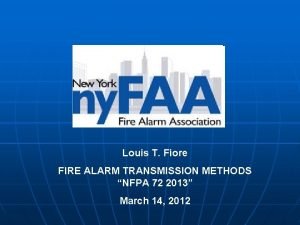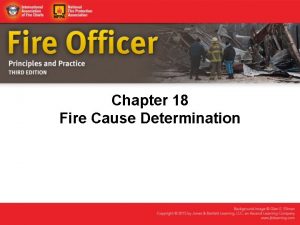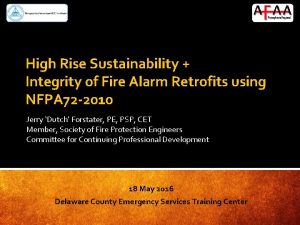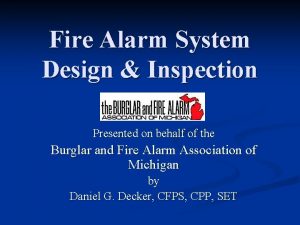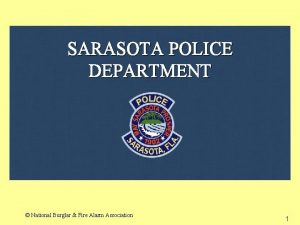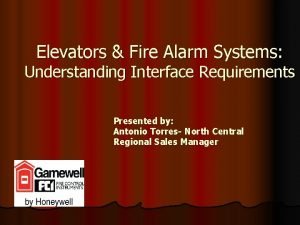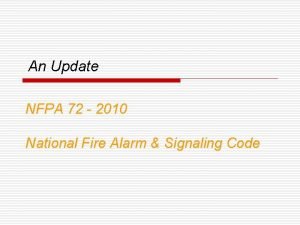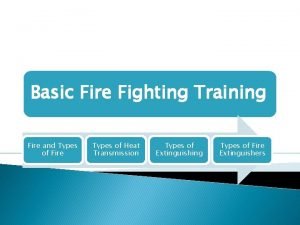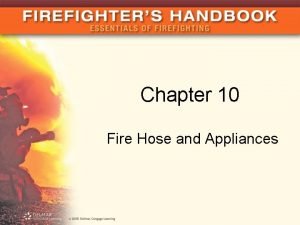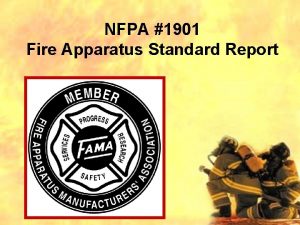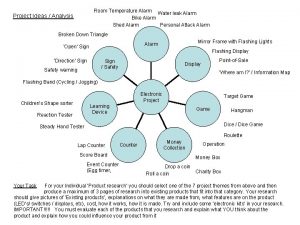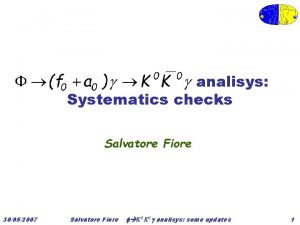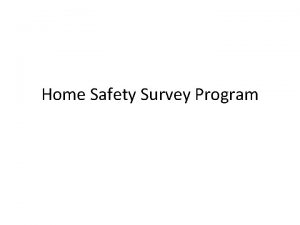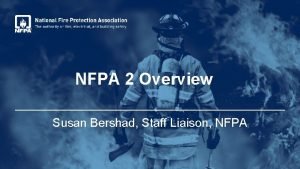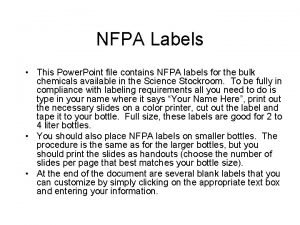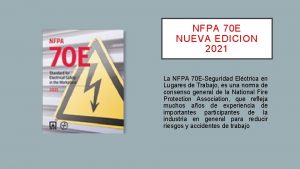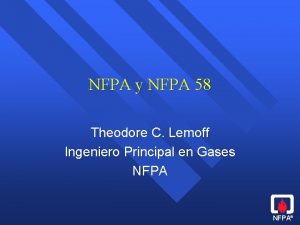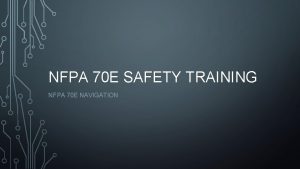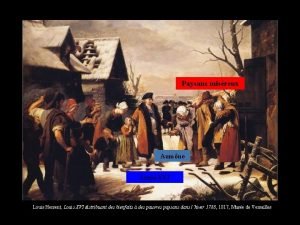Louis T Fiore FIRE ALARM TRANSMISSION METHODS NFPA




















- Slides: 20

Louis T. Fiore FIRE ALARM TRANSMISSION METHODS “NFPA 72 2013” March 14, 2012

Methods in NFPA 72 Chapter 26 n DACT n One-Way Private Radio n Two-Way Radio n Performance Based Technologies

DACT “Digital Alarm Communicator Transmitter” First defined in NFPA 71

NFPA 72 n n n The next edition (2013) will see DACT and a second technology (not two phone lines). The current (and perhaps final) version of NFPA 72 -2013 requires a 6 hr DACT test rather than 24 hrs. The 2016 Edition will probably “sunset” DACT altogether. Two-Way radio, Private One-Way Radio, Digital Cellular and IP will survive as your only communications alternatives. NITNAM Procedure

26. 6. 3. 1 Performance Based Technologies n n Single Path 60 second polling or check-in Multiple Paths 6 hour polling or check-in on each side Digital Cellular IP/Internet

Current Version (2010): 26. 6. 3. 2. 1. 4 Transmission Channels. (A) A system employing a DACT shall employ one telephone line (number). In addition, one of the following transmission means shall be employed: (1) A second telephone line (number) (2) A cellular telephone connection (3) A one-way radio system (4) A one-way private radio alarm system (5) A private microwave radio system (6) A two-way RF multiplex system (7) A transmission means complying with new technologies section

Vo. IP

Issues for Alarms with Vo. IP 1. 2. 3. 4. Pass alarm DACT signal formats in an undistorted fashion Ensure Line Seizure is not compromised The ability to provide for our control panels to "see” a telephone line equivalent (voltage and dialtone) Vo. IP and cable/ISP hardware should have sufficient backup power

MFVN in NFPA 72 -2010 Definition: 3. 3. 141 Manage and maintain their network to ensure service quality and reliability Provide a service that is functionally equivalent to traditional analog phone service (dialing, dial plan, and loop voltage treatment), Provide real-time transmission of voice signals that carry alarm system formats unchanged, Provide both professional installation and subscriber information ……. which preserves primary line seizure for alarm system interconnection, and Have disaster recovery plans to address both individual customer outages and widespread events of a catastrophic nature, including network power restoration equivalent to traditional landline telephone services.



One Way Private Radio n n AES-Intellinet Alarm. Net A Two-Way RF Multiplex • Alarm. Net M • AAGARD • Holmes. Net

Transmission Channels (A) A system employing a DACT shall employ one telephone line (number). In addition, one of the following transmission means shall be employed: (1) A one-way private radio alarm system (2) A two-way RF multiplex system (3) A transmission means complying with 26. 6. 3. 1 (performance-based technologies) ( Exception: Where access to two technologies listed above is not available at the protected premises, with the approval of the authority having jurisdiction, a telephone line (number) shall be permitted to be used as the second transmission means.

26. 6. 3 Communications Methods. The communications methods used to transmit signals to supervising stations shall meet the requirements of 26. 6. 3. 1 for performance-based technologies, or 26. 6. 3. 2 (Digital Alarm Communicator Systems) or 26. 6. 3. 3 (Radio Systems) for prescriptive-based technologies. 26. 6. 3. 1 Performance-Based Technologies. 26. 6. 3. 1. 1 Conformance. Communications methods operating on principles different from specific methods covered by this chapter shall be permitted to be installed if they conform to the performance requirements of this section and to all other applicable requirements of this Code.

26. 6. 3. 1. 5 Single Communications Path. Unless prohibited by the enforcing authority, governing laws, codes, or standards, a single transmission path shall be permitted, and the path shall be supervised at an interval of not more than 60 minutes. A failure of the path shall be annunciated at the supervising station within not more than 60 minutes. The failure to complete a signal transmission shall be annunciated at the protected premises in accordance with 10. 12. 26. 6. 3. 1. 6 Multiple Communications Paths. If multiple transmission paths are used, the following requirements shall be met: (1) Each path shall be supervised within not more than 6 hours. (2) The failure of any path of a multi-path system shall be annunciated at the supervising station within not more than 6 hours. (3) The failure to complete a signal transmission shall be annunciated at the protected premises in accordance with 10. 12. 26. 6. 3. 1. 7 Single Technology. A single technology shall be permitted to be used to create the multiple paths provided the requirements of 26. 6. 3. 1. 6(1) through 26. 6. 3. 1. 6(3).

26. 6. 3. 1. 5 Single Communications Path. Unless prohibited by the enforcing authority, governing laws, codes, or standards, a single transmission path shall be permitted, and the path shall be supervised at an interval of not more than 60 minutes. A failure of the path shall be annunciated at the supervising station within not more than 60 minutes. The failure to complete a signal transmission shall be annunciated at the protected premises in accordance with 10. 12.

26. 6. 3. 1. 6 Multiple Communications Paths. If multiple transmission paths are used, the following requirements shall be met: (1) Each path shall be supervised within not more than 6 hours. (2) The failure of any path of a multi-path system shall be annunciated at the supervising station within not more than 6 hours. (3) The failure to complete a signal transmission shall be annunciated at the protected premises in accordance with 10. 12.

26. 6. 3. 1. 7 Single Technology. A single technology shall be permitted to be used to create the multiple paths provided the requirements of 26. 6. 3. 1. 6(1) through 26. 6. 3. 1. 6(3).

Questions?

Thank you!
 Damper interface panel
Damper interface panel Nfpa 71
Nfpa 71 Nfpa 921 fire causes classifications
Nfpa 921 fire causes classifications Nfpa 1961 standard on fire hose
Nfpa 1961 standard on fire hose Nitin ventures fze
Nitin ventures fze Canadian fire alarm association
Canadian fire alarm association Ravel fire alarm panel
Ravel fire alarm panel Fire alarm sustainability
Fire alarm sustainability Design and inspection of fire alarm system
Design and inspection of fire alarm system Riser diagram fire alarm system
Riser diagram fire alarm system News item text generic structure
News item text generic structure National burglar and fire alarm association
National burglar and fire alarm association Elevator shunt trip wiring diagram
Elevator shunt trip wiring diagram Nfpa 72-2010
Nfpa 72-2010 Vl louis vuitton
Vl louis vuitton A-wax pattern recognition
A-wax pattern recognition Nstm 555 2021
Nstm 555 2021 At a bulk transport incident, firefighters must:
At a bulk transport incident, firefighters must: Fire fighting methods
Fire fighting methods Types of hose folding
Types of hose folding Fire definition
Fire definition

